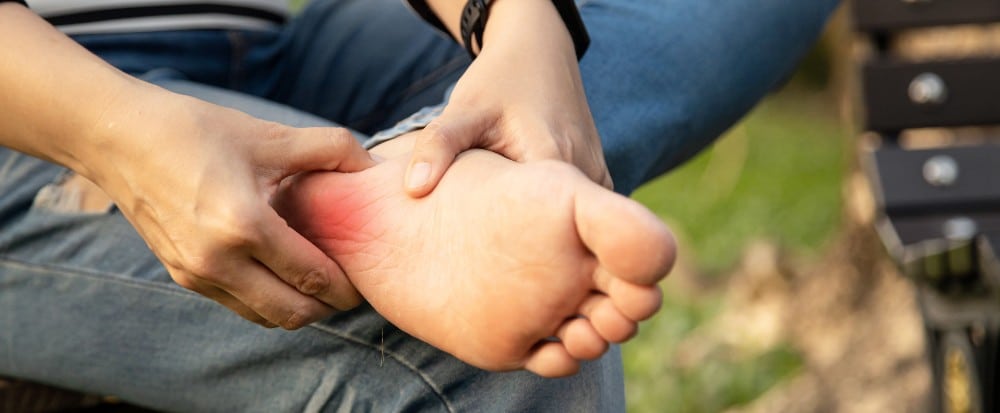Plantar Fasciitis
Plantar Fasciitis is the common term for inflammation of the Plantar Fascia — or the thick, bow-shaped band of tissue that spans the bottom of your foot. It generally presents as a sharp or stabbing pain in or around the heel area and is most often at its worst first thing in the morning, after prolonged periods of standing, or after exercise. It’s a common condition amongst runners, people who are overweight, and people who wear shoes that don’t properly support their feet.
Plantar Fasciitis is caused by small tears in the Fascia, which can happen for a variety of reasons; over stretching of the Plantar Fascia and flat feet being some examples. It’s most common in people over the age of 40, though it can occur in younger patients depending on their specific lifestyle, overall health, and choices in footwear.
Plantar Fasciitis Treatments
Treatments for Plantar Fasciitis depend on the underlying cause of the patient’s condition. Talking to a podiatrist will help to uncover the cause of your Plantar Fasciitis, and therefore determine which course of treatment would best fit your needs. Some possible options for Plantar Fasciitis treatment include:
- Footwear that better supports your arches
- Custom orthotics that are molded to your unique foot shape
- Changes to your exercise regimen
- Exercises and stretches to strengthen the Plantar Fascia and its surrounding areas
- Cortisone injections for pain and inflammation relief
- Surgery in severe cases that don’t respond well to other treatment options (rare cases)
- Night splints to stretch calf muscles while sleeping
- Ice — rolling the foot over something cold to ease pain and inflammation
Preventative Tips
Though it’s not a guarantee as everyone’s anatomy is unique, there are some actions you can take to help prevent the onset of Plantar Fasciitis. As they say, an ounce of prevention is worth a pound of cure, so taking action before you start to experience pain is a wise move. Some things you can incorporate into your everyday life to keep your Plantar Fascia healthy include:
- Maintaining a healthy weight to minimize stress in your Plantar Fascia
- Wearing supportive shoes while performing physical activities
- Participating in low impact sports such bicycling or swimming
- Gently stretching your leg muscles and foot arches regularly
One of the recommended treatments for Plantar Fasciitis is a combination of stretches. Stretches include those that directly impact the Plantar Fascia, as well as those that focus on supporting the Plantar Fascia through strengthening its surrounding muscles. These mild exercises will allow your Plantar Fascia to relax, strengthening and conditioning it while easing pain and inflammation. Some examples of these stretches include:
Calf Stretch
Lean against a wall with your hands supporting your weight. Position one leg straight with the heel firmly on the floor. Bend the knee of your other leg and push your hips toward the wall, slowly and gradually. You’ll feel the heel cord and calf muscle pulling — this means your stretch is effective. Hold this position for 10 seconds and release, repeating 20 times on each side.
Plantar Fascia Stretch
In a seated position, cross one foot over the knee of your opposite leg. Gently grab your toes and pull them slowly toward you, placing your other hand along your Plantar Fascia to feel the effectiveness of the stretch, and hold for 10 seconds. Do not overdo this. Pain is not the point here, only gentle stretching. Repeat this exercise 20 times for each foot. If reaching your foot is difficult, try wrapping a towel around your big toe to allow yourself more distance.
What You Can Do
If you’re having pain in your feet — specifically stabbing pain in or around the heel area, Plantar Fasciitis could be the cause. Rather than going through your days in pain, try talking to a podiatrist. Even if you don’t have Plantar Fasciitis, they can help you find the cause of your foot pain, determine the best possible course of treatment, and get you the relief you need.

